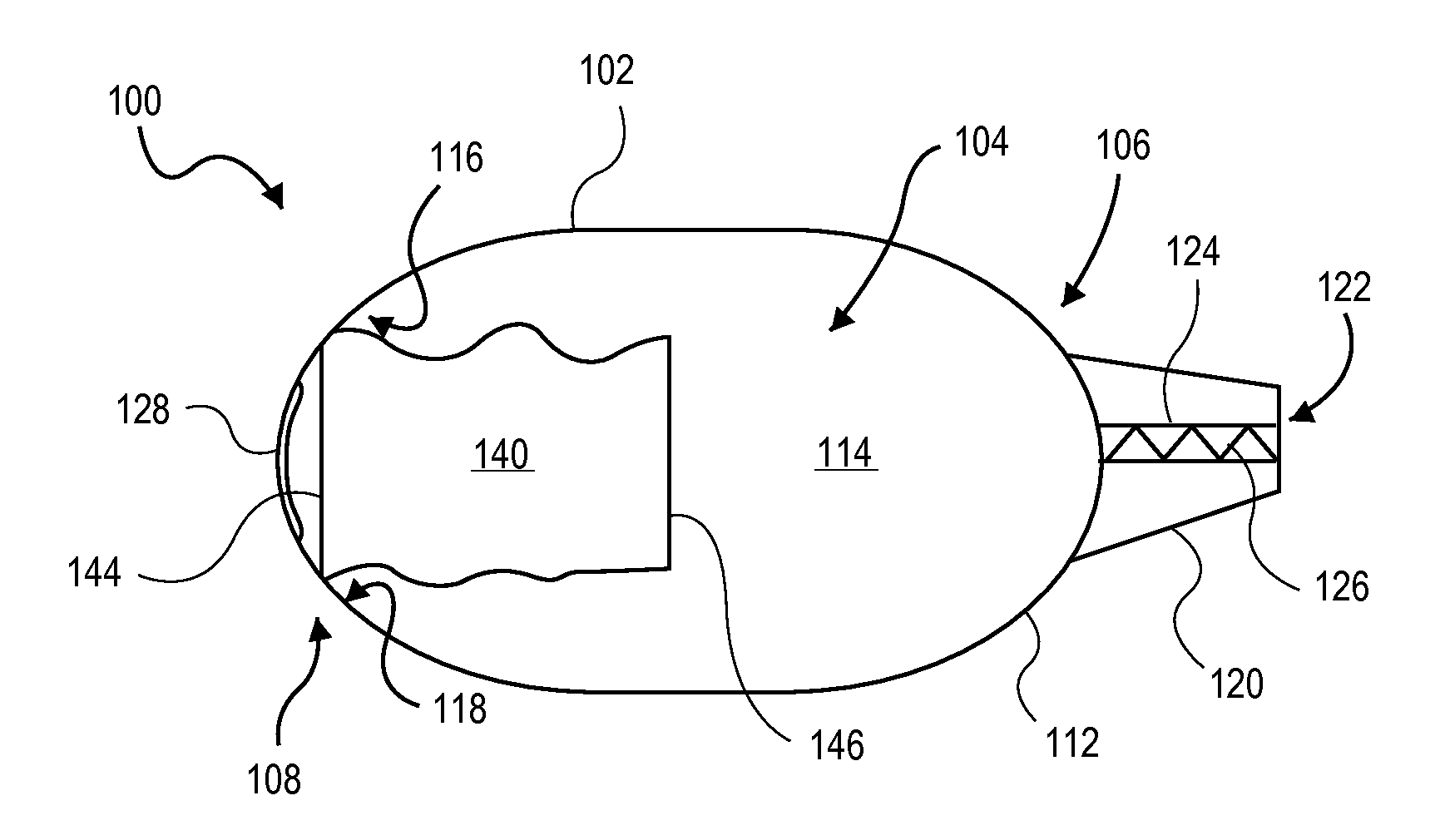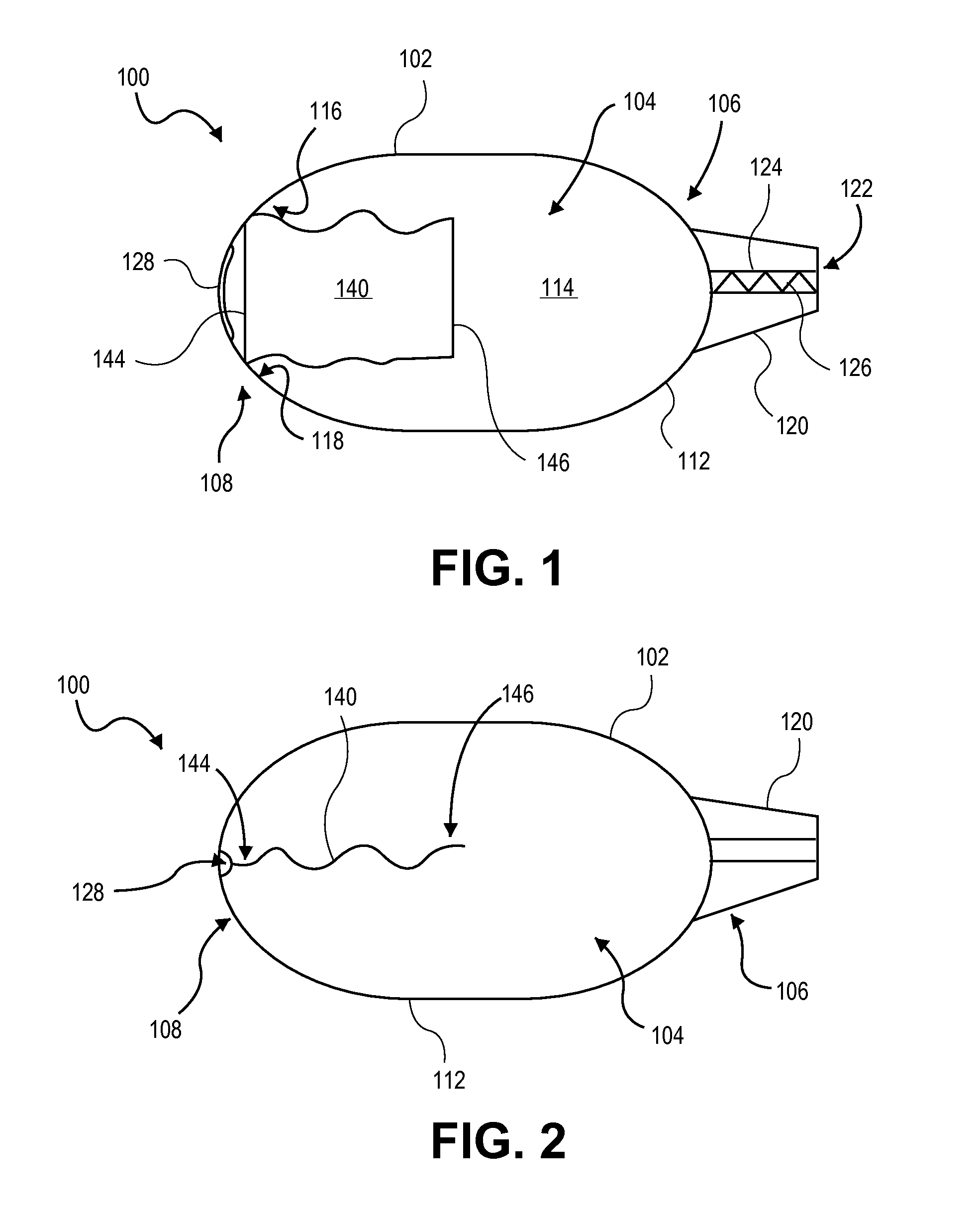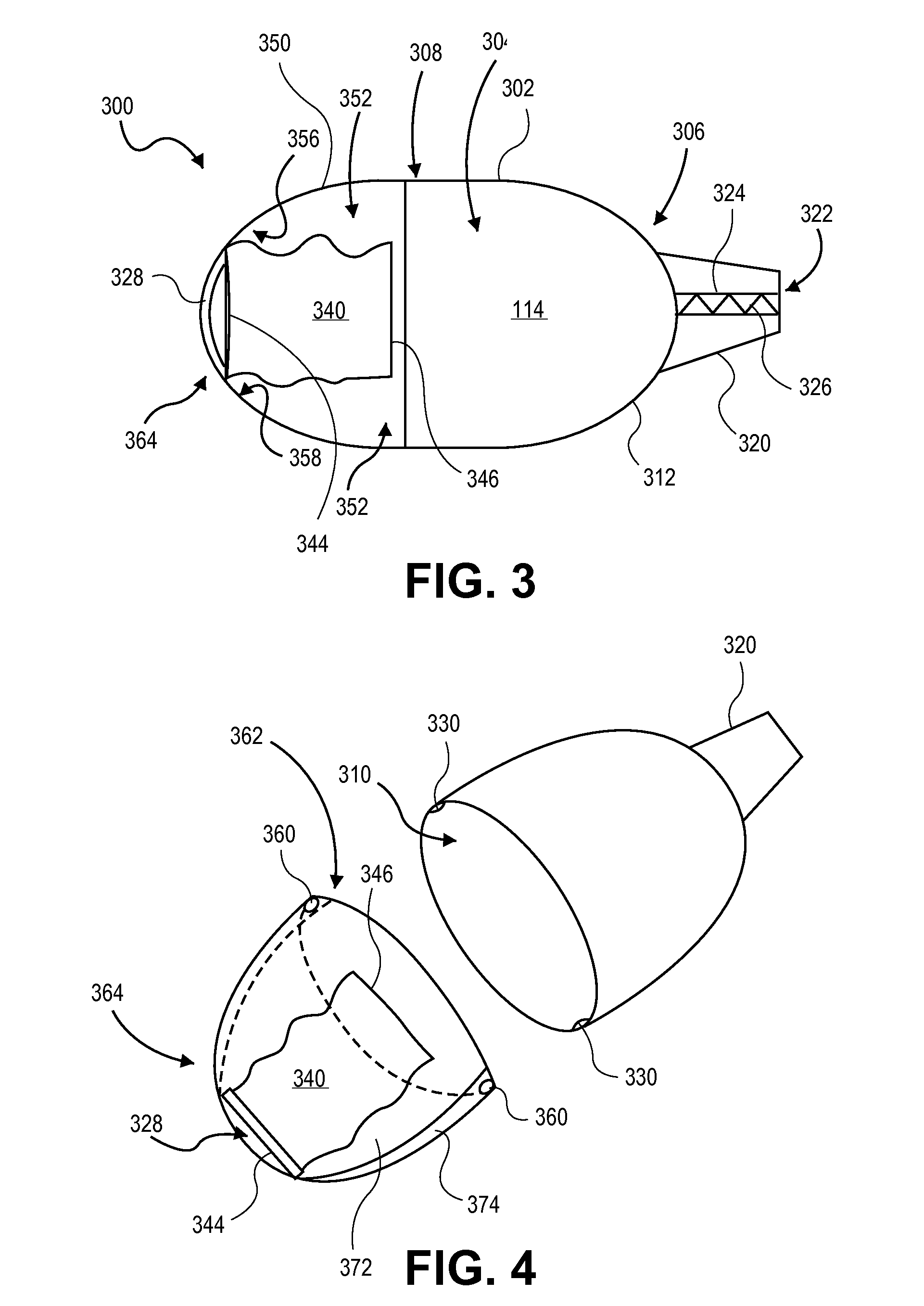Dry powder inhaler with flutter dispersion member
a technology of powder inhaler and dispersion member, which is applied in the field of inhalers, can solve the problems of premature powder deposit in the patient's mouth or throat, poor dosing uniformity, and impeded drug penetration,
- Summary
- Abstract
- Description
- Claims
- Application Information
AI Technical Summary
Benefits of technology
Problems solved by technology
Method used
Image
Examples
example 1
Effect of Flow Rate
[0053]The aerosol properties of the prototype are determined by a Next Generation Impactor (NGI). The device geometry used in this first example is a truncated cone-single barrel (TC-SB) with inlet diameter of 0.4 cm and outlet diameter of 0.6 mm and length of 2.5 cm. The film (i.e., flutter membrane) is a polyolefin film (length=2.8 cm, width=0.3 cm, and a thickness of 85 microns). The flow rates studied are 30 lpm and 60 lpm. The drug used here is ciprofloxacin and is analyzed analytically using a UVvis spectrophotometer.
[0054]As shown in FIG. 5, more drug is removed from the film at 60 lpm than 30 lpm. The respirable fraction (RF) at 60 lpm is 56.75±2.73% compared to that of 30 lpm which is 46.62±6.34%. The fine particle fraction (FPF) at 60 lpm and 30 lpm is statistically similar at 65.06±6.84% and 60.65±7.64%.
example 2
Effect of Device Geometry
[0055]The device geometry may play an important role in drug dispersion.
[0056]The device geometries used in this example is a truncated cone-singe barrel (TC-SB), truncated cone-double barrel (TC-DB, made of two single barrel), cylindrical chamber (CC, diameter of=0.6 cm and length=2.5 cm), Slit nozzle (SN, rectangular nozzle—3cm by 1 mm). The drug used here is ciprofloxacin and is analyzed analytically using a UVvis spectrophotometer. The flow rate is 60 lpm.
[0057]As shown in FIG. 6, more drug is removed from the film in TC-single barrel than double barrel. However there is more throat deposition in TC-single barrel. The Cylindrical chamber has most drug removed from the film. This suggests the magnitude of dynamic flutter forces is lowest in cylindrical chamber. More device deposition is noticed in slit nozzle. The FPF and RF are shown for the following devices are shown in the table below.
TABLE 1FPF and RF percentages for various device geometries.DeviceF...
example 3
Effect of Field Dimensions (Length)
[0058]In the slit nozzle device, the effect of film length is studied. The two lengths that are studied are 3 cm and 1.5 cm. The drug used here is ciprofloxacin and is analyzed analytically using UVvis spectrophotometer. The flow rate is 60 lpm.
[0059]As shown in FIG. 7, as the length is increased, drug removal from the film is decreased and a higher percentage drug is deposited in the throat. RF is higher when we use a 1.5 cm film compared to that of 3 cm length, as shown in the table below.
TABLE 2FPF and RF percentages for various film lengths.Length of filmFPF (%)RF (%)1.5 cm72.73 ± 3.6352.26 ± 2.61 3 cm67.14 ± 3.3634.38 ± 1.72
PUM
 Login to View More
Login to View More Abstract
Description
Claims
Application Information
 Login to View More
Login to View More - R&D
- Intellectual Property
- Life Sciences
- Materials
- Tech Scout
- Unparalleled Data Quality
- Higher Quality Content
- 60% Fewer Hallucinations
Browse by: Latest US Patents, China's latest patents, Technical Efficacy Thesaurus, Application Domain, Technology Topic, Popular Technical Reports.
© 2025 PatSnap. All rights reserved.Legal|Privacy policy|Modern Slavery Act Transparency Statement|Sitemap|About US| Contact US: help@patsnap.com



